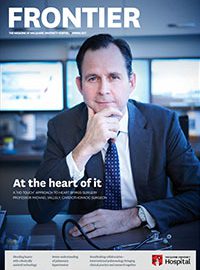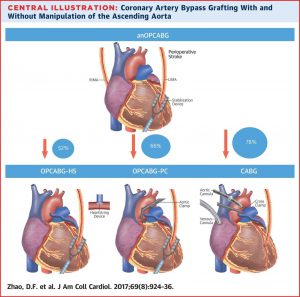Cooper EA, Edelman JJ, Black D, Brereton RJ, Ross DE, Bannon PG, Wilson MK, Vallely MP
Heart Lung Circ 2013 Dec;22(12):989-95
PMID: 23827207
View article on PubMed
Abstract
BACKGROUND: Elderly patients undergoing surgical revascularisation may disproportionately benefit from avoiding manipulation of the ascending aorta and cardiopulmonary bypass. In this multi-centre observational study, we sought to determine the 30-day outcomes of anaortic off-pump coronary artery bypass (OPCAB) in an elderly and very-elderly population.
METHODS: Data were prospectively collected for all patients aged >70 years old (y) undergoing anaortic OPCAB at three hospitals between January 2002 and October 2011. Analysis was carried out on two age sub-groups (70-79 y vs. ≥80 y). Multiple logistic regression was used to identify predictors of post-operative 30-day mortality.
RESULTS: In total, 1135 patients >70 years underwent anaortic OPCAB – 817 (72%) patients were aged 70-79 y while 318 (28%) were aged ≥80 y. The rate of mortality and morbidity for both groups was low: 30-day mortality (70-79 y: 1.8%; ≥80 y: 2.8%) or permanent stroke (70-79 y: 0.2%; ≥80 y: 0.9%). Chronic lung disease, a history of previous myocardial infarction and left main disease were independent predictors of 30-day mortality.
CONCLUSIONS: OPCAB is associated with low rates of 30-day mortality and peri-operative stroke in this elderly and very elderly patient cohort. Anaortic OPCAB can provide excellent short-term post-operative outcomes and may give the elderly and very elderly population the opportunity to benefit from surgical coronary revascularisation.




 Macquarie University Hospital surgeon Professor Michael Vallely and his team have completed a network meta-analysis of the latest evidence for off-pump heart surgery across the world. The research shows that a ‘no touch’ or ‘anaortic’ approach has a significant impact on reducing stroke.
Macquarie University Hospital surgeon Professor Michael Vallely and his team have completed a network meta-analysis of the latest evidence for off-pump heart surgery across the world. The research shows that a ‘no touch’ or ‘anaortic’ approach has a significant impact on reducing stroke. 